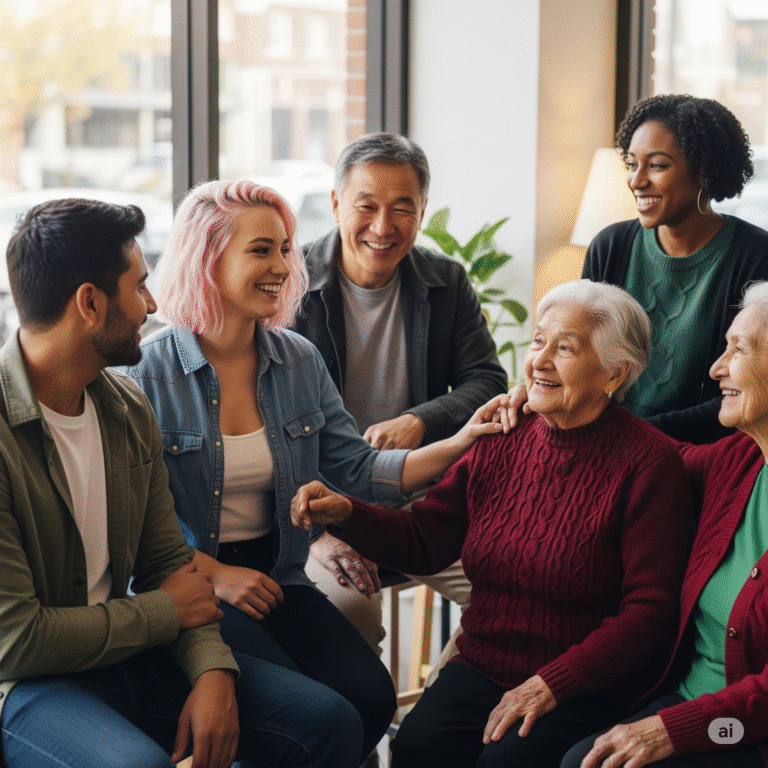Dialing for Discovery: Unearthing the Secrets of Your N11 Phone Numbers!
Ever stared at your phone, knowing you need help but unsure who to call? We all know 911 is for those heart-pounding emergencies – the sirens, the urgency, the moments when every second counts. But what about everything else? The pothole that could swallow a small car? That moment you feel completely overwhelmed and just need to talk? Or perhaps you’re wondering how to make an international call without a hitch?
Get ready to unlock a hidden world of digital heroes! We’re talking about the incredible, often unsung, N11 phone numbers. These aren’t just random digits; they’re your direct lines to a universe of essential services, many of them absolutely free. Think of them as your secret cheat codes for navigating modern life, making it safer, simpler, and wonderfully connected.
The Grand Origin Story: How 911 Changed Everything
Let’s rewind to the mid-20th century. Imagine an emergency unfolding – a fire, a crime, a medical crisis. Who do you call? Often, there was no single answer. You might have had to call the police station directly, or the fire department, or an ambulance service, all with different, often hard-to-remember numbers. It was chaotic, inefficient, and frankly, dangerous.
The push for a universal emergency number wasn’t a sudden flash of brilliance; it was a dedicated campaign for better public safety.
- A Call for Unity (1950s & 60s): The idea first emerged from the National Association of Fire Chiefs in 1957. Later, a powerful recommendation came from the President’s Commission on Law Enforcement and Administration of Justice in 1967: America needed one number for all emergencies.
- The Brains Behind the Digits: This urgent plea led to a crucial meeting in November 1967 between the Federal Communications Commission (FCC) and American Telephone and Telegraph Company (AT&T). Their mission: pinpoint a short, memorable, and technically sound number that could be adopted nationwide.
- Why 911? The Rotary Phone Connection! In January 1968, AT&T announced their choice: 9-1-1. This wasn’t arbitrary!
- Tech Savvy: 9-1-1 wasn’t already in use as an area code or service prefix, meaning it wouldn’t clash with existing phone lines. This was a critical technical consideration for the vast telephone switching systems of the era.
- Memorability: Three digits are inherently easy to recall under stress.
- The Rotary Factor: On those old rotary phones, dialing “1” could sometimes happen accidentally if there was line noise or a quick, unintentional tap. Starting with a “9” made accidental dialing far less likely, ensuring that when you dialed 911, it was an intentional act.
- History is Made: On February 16, 1968, in Haleyville, Alabama, the very first 911 call in the U.S. was placed. It wasn’t just a phone call; it was a revolution in emergency response.
Crucial Global Insight: Here’s a vital takeaway: 911 is NOT a universal global emergency number! While it’s iconic in North America, travel across the pond and you’ll likely dial 112 in the European Union, 999 in the UK, or 000 in Australia. Always know the local emergency number when you’re exploring new horizons!
Beyond the Blue Lights: Your N11 Cheat Sheet for Everyday Life
Okay, so 911 is reserved for life-or-death situations. But what about the countless other moments when you need help, information, or just a clear path forward? That’s where the rest of our N11 superstar lineup shines! These numbers are designed to simplify access to critical services, freeing up emergency lines and connecting you efficiently to exactly what you need.
1. 211: Your Community Compass & Connection Hub
Feeling adrift in a sea of social services? Overwhelmed by questions about local aid? Just dial 211!
- What it does: Think of 211 as your super-connector to local community services. Need help finding a food pantry, shelter, or affordable childcare? Looking for mental health support, substance abuse resources, or even job training programs? 211 is your answer.
- Why it’s invaluable: Often operated by United Way organizations, 211 navigates the complexities of community support for you. It ensures that no matter your need, you can find the right local agency or program to help. It’s about empowering communities by making resources genuinely accessible.
- Cost: Almost always FREE!
2. 311: Your City’s Non-Emergency Hotline
Spot a giant pothole that’s become a local legend? Notice a streetlight gone rogue? Got a non-emergency complaint about a noisy neighbor? Don’t even think about calling 911 for these! Your go-to is 311!
- What it does: This is your direct, non-emergency line to local government services. It’s designed to handle a vast array of common civic issues: reporting graffiti, abandoned vehicles, getting information about city events, or asking about trash collection schedules.
- Why it’s ingenious: 311 takes the pressure off 911, allowing emergency responders to focus on true crises. For you, it means a streamlined way to report issues, get answers, and help your city run smoother, without the hassle of navigating endless department directories.
- Cost: Generally FREE! (Availability varies by city/county, so check if your area has this amazing service!)
3. 411: The Retro Information Gateway
Remember life before Google? When you needed a phone number, you called an operator through 411.
- What it did: It was the original directory assistance. You’d ask, and they’d tell you the number.
- Why it’s faded: In our digital age, 411 has largely become a relic. Why pay for a service when your smartphone can find that number instantly and for free?
- Cost: Often NOT FREE anymore! Its golden age is definitely behind it.
4. 511: Your Smart Travel Companion
Stuck in traffic? Wondering if that snowstorm has closed the highway? Need the bus schedule right now? Look no further than 511!
- What it does: This is your real-time traffic, transit, and travel information powerhouse. Get instant updates on traffic conditions, road closures, construction zones, public transportation schedules, and even weather-related travel advisories.
- Why it’s a lifesaver: 511 helps you navigate your commute more intelligently, avoid delays, and stay safe on the roads. It’s like having a personalized traffic helicopter constantly updating you.
- Cost: Generally FREE! (Though standard mobile plan minutes might apply depending on your carrier.)
5. 611: Your Phone’s Personal Tech Support
Got a glitch with your cell service? Can’t make or receive calls? Billing question? Don’t panic, dial 611!
- What it does: While not a federally designated N11 code for public services, 611 is almost universally adopted by landline and mobile phone providers as their direct customer service or technical support line.
- Why it’s super convenient: It’s the quickest way to get help directly from your service provider about your account, billing, or any technical hiccups you’re experiencing.
- Cost: Typically FREE when you call from your provider’s own network.
6. 711: Bridging the Communication Gap for Everyone
This number is a true champion of inclusivity and communication access. 711 is for individuals with hearing or speech disabilities.
- What it does: This is the Telecommunications Relay Service (TRS). It allows individuals who are deaf, hard of hearing, or have speech disabilities to communicate by phone with hearing persons and vice versa. A specially trained operator (a communications assistant, or CA) acts as a real-time intermediary, typing what a deaf person signs or says, and speaking what the hearing person says to the deaf person.
- Why it’s essential: Mandated by the FCC, 711 ensures that everyone, regardless of communication ability, has equal access to phone services, fostering connection and enabling vital conversations, including with emergency services.
- Cost: FREE!
7. 811: The “Call Before You Dig” Lifeline
Planning a backyard project? Thinking of planting a new tree, building a deck, or installing a fence? STOP! Before you put that shovel in the ground, dial 811!
- What it does: This is your absolutely crucial “Call Before You Dig” number. It initiates a process where professional locators are sent to your property to mark the exact locations of underground utility lines – gas, water, sewer, electric, communication cables.
- Why it’s vital (and often legally required!): Striking an underground utility line can be catastrophic! We’re talking explosions, electrocutions, severe injuries, massive service outages, and eye-watering fines. 811 prevents these disasters, protecting lives, property, and essential services. It’s an easy, free step that can save you a world of trouble.
- Cost: FREE!
8. 988: A New Beacon for Mental Health Crisis
A more recent but profoundly significant addition to the N11 family, 988 provides immediate and confidential support for mental health crises.
- What it does: Launched nationwide in July 2022, 988 connects callers to trained crisis counselors for suicidal thoughts, mental health distress, substance use crises, and any form of emotional struggle.
- Why it’s a game-changer: 988 is designed to be as easy to remember and access for mental health emergencies as 911 is for physical ones. It offers a compassionate, confidential, and specialized response, diverting mental health crises away from police involvement when appropriate and connecting individuals to the specific support they need, potentially saving countless lives and fostering a more empathetic approach to mental well-being.
- Cost: FREE and confidential!
Beyond the Common: The Lesser-Known N11 Codes and What They Mean
While the N11 codes discussed above are the most frequently utilized and recognized for public services, the FCC’s official assignments for these three-digit numbers include a couple more, some with unique functions and others reserved for future use. Understanding these adds another layer to the comprehensive design of the North American Numbering Plan.
011: Your Gateway to International Calls
While most N11 codes connect you to a service, 011 is different. It’s an international dialing access code.
- Function: When you dial 011 before a country code and a phone number, you are signaling to your phone carrier that you intend to make an international long-distance call outside of North America. It acts as the “exit code” from the North American telephone network to the global one.
- Why it’s unique: Unlike the other N11 codes that connect you to a specific type of service (like police, information, or crisis support), 011 is a purely technical dialing prefix required for routing your call internationally.
- Cost: The cost will depend entirely on your phone plan’s international calling rates for the destination country.
111 and Others: The Reserved and Unassigned Codes
The comprehensive nature of the N11 system also includes numbers that are either reserved for very specific, often technical uses, or simply held in reserve for future assignment by the FCC.
- 111: This code is officially designated for special services. While not assigned a specific public-facing function like 911 or 211, it is reserved for network or carrier-specific purposes, often related to maintenance or internal operations that are not typically accessed by the general public. Its unassigned nature for common use prevents conflict and allows for potential future application.
- Other Unassigned Codes: While not directly N11 codes, it’s worth noting that the overall North American Numbering Plan has reserved blocks (like numbers starting with 555 for fictional use in media, or various 900 numbers for premium services) to prevent conflicts and allow for future expansion. Within the specific N11 framework, however, 111 is the primary remaining unassigned/special code for broader public understanding.
The Enduring Value of Simplicity
These N11 codes are more than just phone numbers; they are ingenious solutions to complex societal needs. By providing simple, universally understood access points, they empower us to connect with help, information, and critical services quickly and efficiently. They are a testament to the idea that sometimes, the most elegant solutions are also the most straightforward, transforming how we interact with our communities and ensuring that help is always just three digits away.




